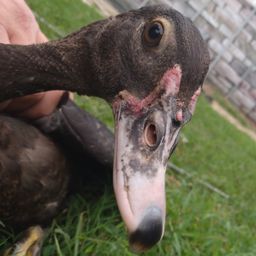Growing Ladino Clover: A Comprehensive Guide

Ladino clover (Trifolium repens) is a perennial clover that is well-known for its high yields and superior forage quality. In this guide, we'll walk you through the steps to successfully plant and grow Ladino clover, taking into account variations in growing locations and conditions.
Purchase Ladino Clover Seed Here
Planting Instructions
- Choose the right time Plant Ladino clover in the spring or fall, depending on your location and climate. In general, Ladino clover should be planted when the soil temperature is between 60-65°F.
- Select a suitable location Ladino clover prefers well-drained, fertile soil with a pH between 6.0-7.0. It can tolerate partial shade, but full sun is best.
- Prepare the soil Loosen the soil to a depth of 4-6 inches and remove any rocks or debris. Incorporate organic matter, such as compost or aged manure, to improve soil structure and provide nutrients.
- Sow the seeds Broadcast Ladino clover seeds at a rate of 5-8 pounds per acre, or 1/4 to 1/2 pound per 1,000 square feet. Lightly rake the seeds into the soil and water gently.
- Maintain the seedlings Keep the soil moist until the seedlings are established. Once established, Ladino clover is drought-tolerant and requires minimal maintenance.
Growing Instructions
- Fertilization Ladino clover does not require fertilizer if the soil is adequately amended. However, a light application of nitrogen in the spring can help promote growth and yield.
- Watering Ladino clover is drought-tolerant but performs best with regular moisture. Water deeply once a week during dry spells.
- Pest and disease management Ladino clover is generally free from pest and disease issues. However, it can be susceptible to root rot in poorly drained soils.
- Harvesting Ladino clover can be grazed or cut for hay or silage. It is recommended to harvest when the plant is in the early bloom stage, as this is when it has the highest nutrient content.
- Regenerative and Permaculture Techniques To incorporate Ladino clover into regenerative and permaculture systems, consider intercropping with other species or planting in a diverse, multi-species mix. Additionally, using no-till planting methods and practicing rotational grazing can help improve soil health and yield.
By following these detailed planting and growing instructions for Ladino clover, including tips for success and variety-specific advice, you can successfully cultivate this high-yield, superior-quality forage in your pasture or hayfield.
The Therapeutic Benefits of Gardening for Mental Health
Gardening enhances mental health with stress relief, nature connection, and a sense of achievement for well-being.


